Achievable clock rates over the course of the temperature
Cold cards are always the best, but unfortunately this is never so realistic. That's why we stressed the Asus RX 570 Strix OC and tested and measured it over a longer period of time, both in open and closed housing.
In the gaming loop, the temperatures of the GPU are between 69°C and 70°C, which is already accompanied by an audible noise. The boost clock can also be increased to approx. 1300 MHz, which represents a significant increase compared to the previous model, but this is mainly due to a higher power limit and more aggressive cooling.
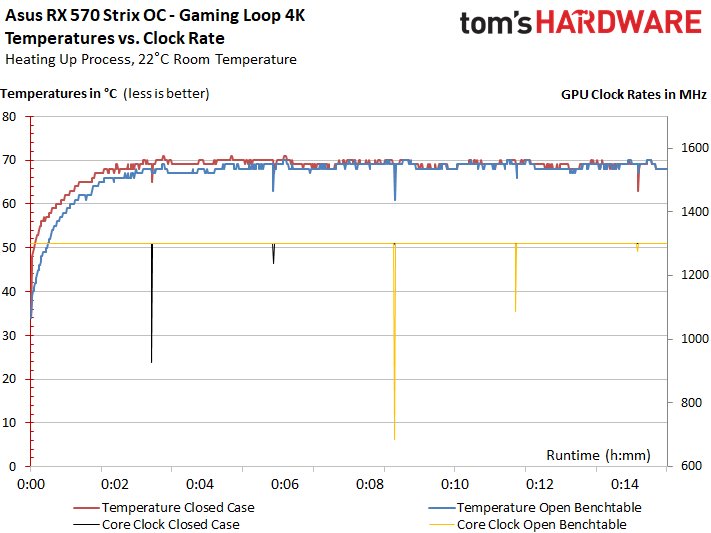
The same applies to the stress test, in which the fans in the closed housing are already running almost amok at up to 75°C, but get a grip on the whole thing. But more on that. The clock rate for the stress test is also significantly higher than the previous model.
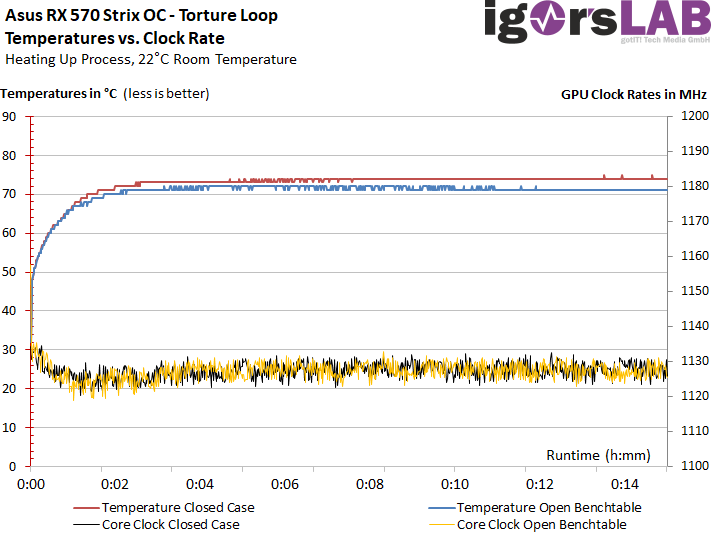
Infrared analysis of board temperatures
Asus did a lot different and above all right with the board this time. As long as we move in the gaming loop without any further overclocking, the map becomes clearly audible, but the values remain in the green area.
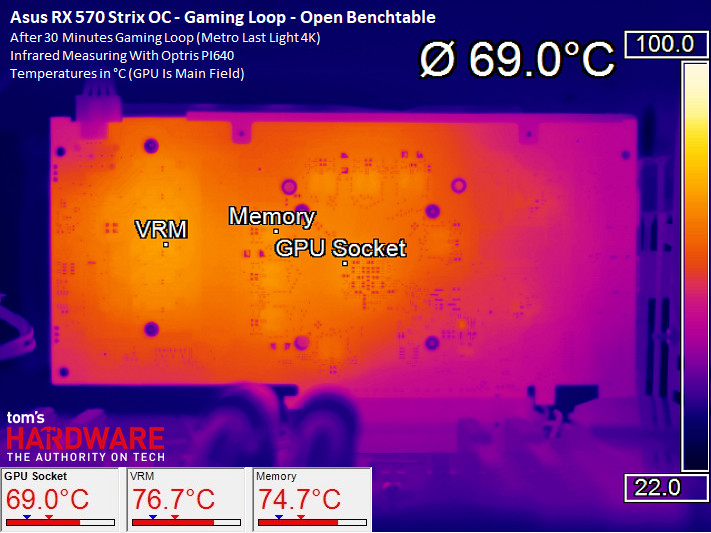
Even in the closed housing one could still live well with the measured values, although it is suggested that not much thermal room for manoeuvre is left if the load is increased even further.
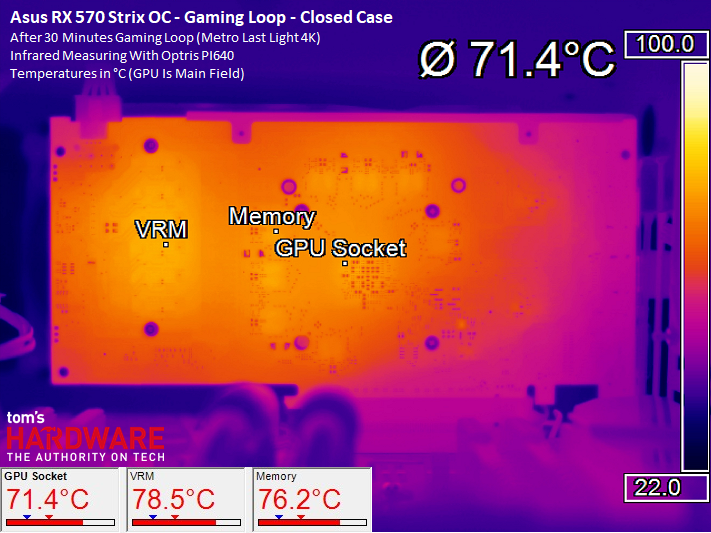
The stress test then reveals the limits of the lack of active memory cooling. The affected modules remain just below the permissible maximum temperature even in the open structure.
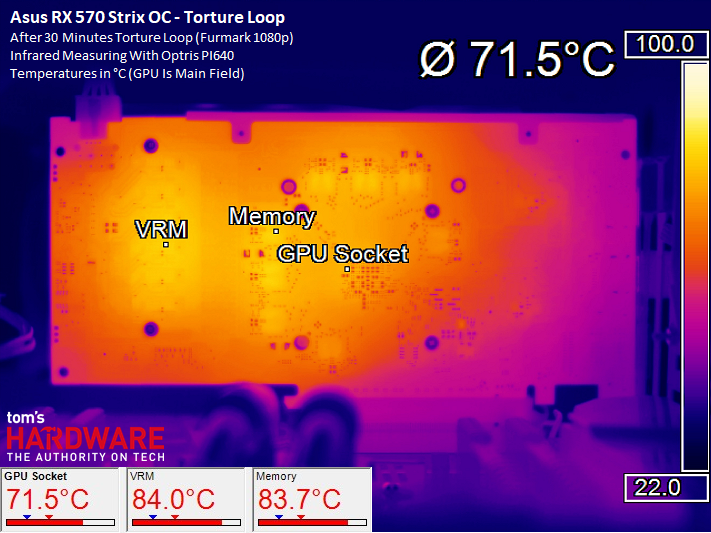
In the closed housing this limit is also reached and it makes little sense to tighten the fan curve even further, because the fans are already turning at approx. 80%.
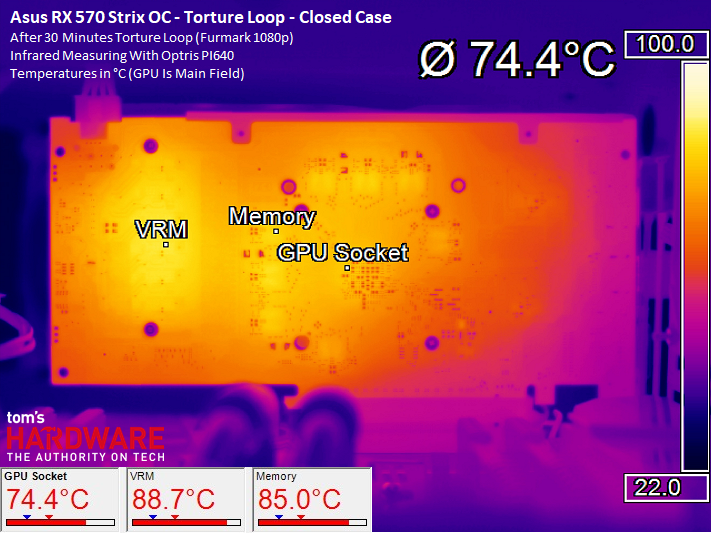
Fan speeds and noise emission ("volume")
Here, Asus' concept of replacing the cooling surface with more air pull is taking revenge, because while the speeds in gaming produce a still somewhat tolerable noise, with even more load it gets really loud.
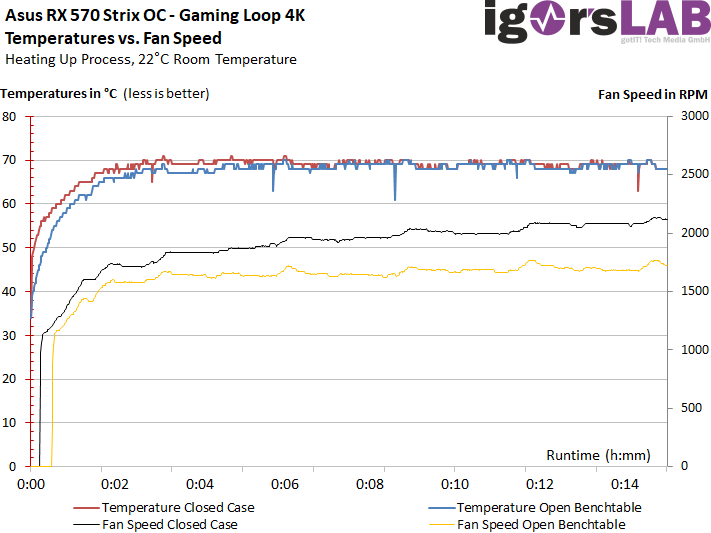
In the stress test, if you let the card run for a longer period of time, the 80% of the maximum speeds are easily reached and you need well-finished headphones to be able to bear the whole thing.
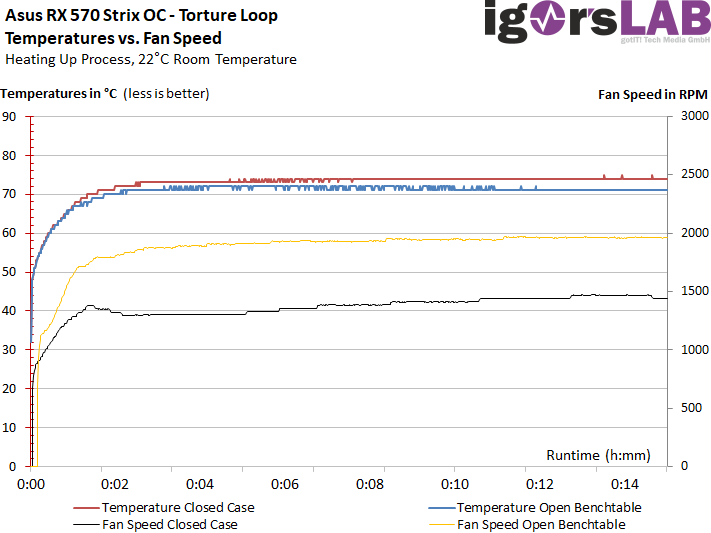
With at least 41.3 dB(A) in the gaming loop, a very broadband sound carpet unfolds, which is mainly characterized by the noise of the air, but also has lower frequency components (bearing, motor). The stress test then quickly goes up to 44.7 dB(A) and thus into areas that you may not be right anymore.
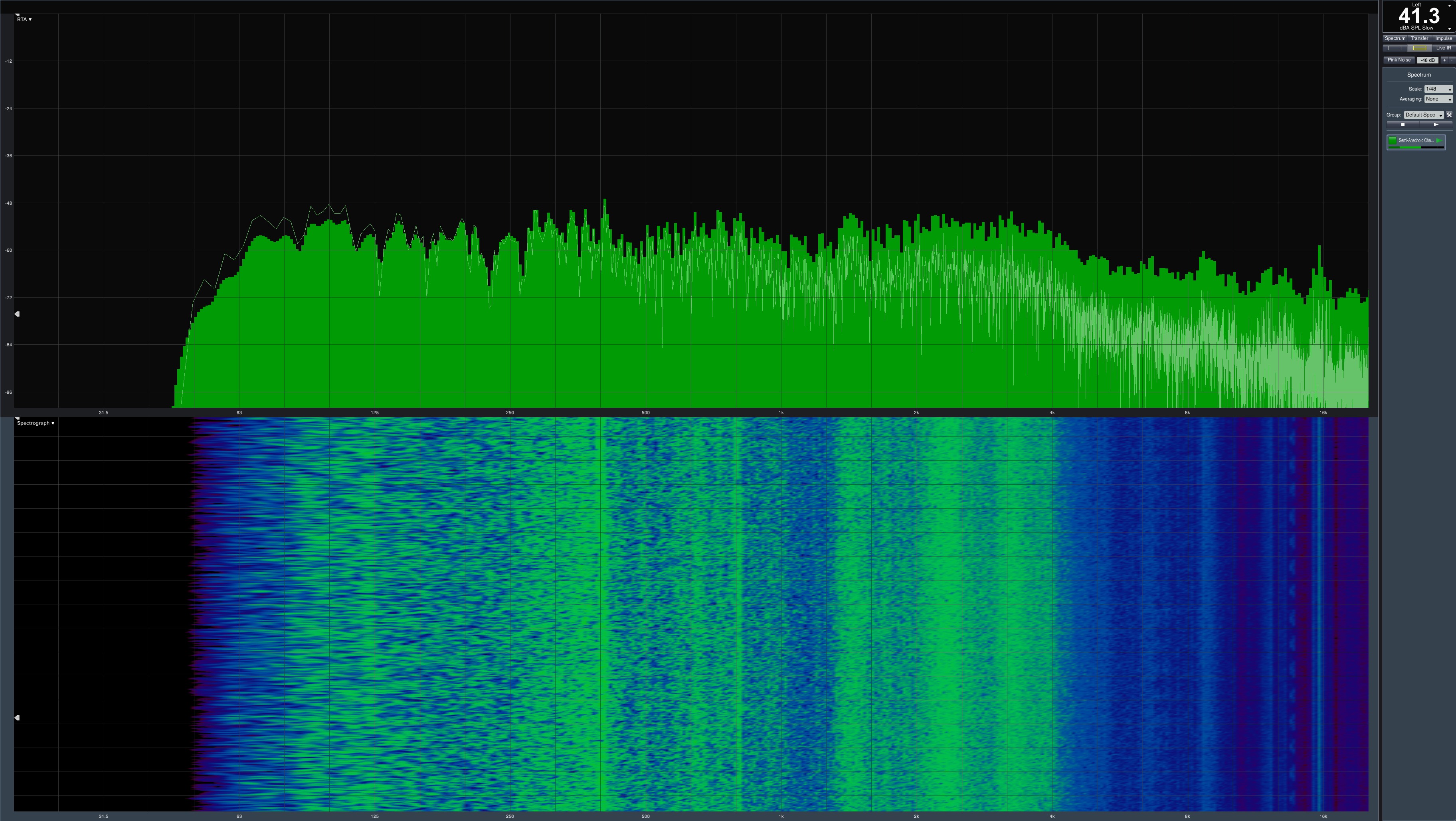
Unfortunately, one notices to the card that it is above all the cost minimization that plays clearly in the foreground. You can see that one way or the other, but there are certainly more performater and quieter coolers.

































Kommentieren